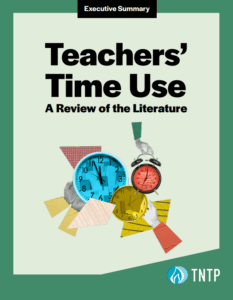For decades, the teaching profession has relied on a work now, pay later system. Teachers earn artificially low salaries early in their careers, based on a promise of incremental raises for sticking around and end-of-career payouts from a pension plan. To actually get their full compensation, they have to stay in the same school system for 25 years or more.
This system has held teachers hostage, and in the face of unfunded pension liabilities, it is an increasingly bad deal for employees. I’d bet that if you actually asked junior teachers (or anyone who has not already spent years paying into such a system) whether they'd rather have higher salaries now or a pension plan later, they'd overwhelmingly take higher salaries. And they’d be smart to do so.
Since Detroit officially declared bankruptcy in June, much has been written about the unfunded pension liability in this country. In Detroit, pensioners are now one of several creditors, and the latest figure to emerge from bankruptcy court calls for paying retirees 16 cents on the dollar.
Nationwide, teacher pensions are estimated to be underfunded by nearly $400 billion—and even that eye-popping estimate is undoubtedly far less than the actual liability, due to grossly unrealistic assumptions about investment returns. Understandably so, many are questioning the sustainability of the current system—and as citizens and taxpayers we should all be concerned—but what is sometimes lost in the discussion is what is actually in the best and most realistic interest of our teachers.
As an employee, I’d be highly skeptical about hooking my future to a system where politicians are incented by perpetual budget shortfalls to underfund my pension, where back-loaded design means dramatically lower pay for the first 20 or so years of my career and where if I move across state lines or change careers I forfeit everything. Every current and future teacher in America should ask themselves two questions: “Do I expect to stay in the same profession in the same state for 30 years? And if so, do I trust current and future politicians to pay me later?”
They’d be smart to say no.
The math is clear: Current pension costs 17 percent, on average, of teachers’ salaries, up from about 12 percent in 2004. As pension costs continue to rise, and as state and district budgets stagnate, it will not only become harder and harder to fund teacher raises (including basic cost-of-living adjustments), it could lead to salary and benefit reductions in many districts.
This does not have to be our fate. Six-figure teacher salaries are within our reach, but we have to make more responsible choices. We are strapped to our current system by inertia, not reason. For example, private-sector costs for defined-contribution plans cost closer to 10 percent of employees’ salaries, on average. A well-designed system of defined contributions or cash-balance options would unlock promised pay-later dollars for current salaries, and allow teachers to choose where and how long they want to teach without forcing them to leave much of the money they’ve earned behind.
To be sure, this type of shift would make little sense for many teachers nearing the end of their careers. Let’s take care of our veteran teachers who have spent years paying into these systems by doing our best to make good on promises (no matter how ill-conceived). But doing right by younger and aspiring teachers clearly calls for a different model. Let’s stop making promises about some mythical future benefit and start giving teachers real choices today that unlock funds to pay them what they are worth.








